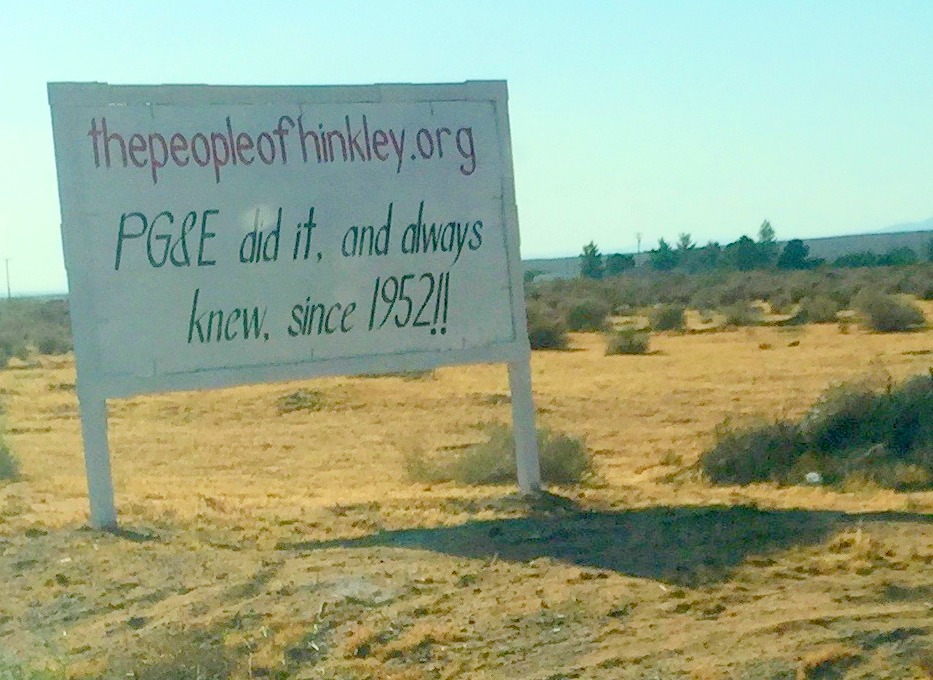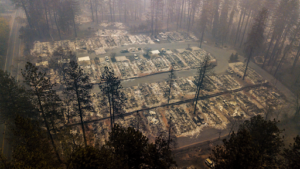A Crime Against Humanity
Significant Changes Made in EPA Regulations
We need to inform everyone of the danger to our public and private water distribution systems. The Environmental Protection Agency under the Trump Administration and Army Corps of Engineers have slated changes to shrink national water protections in February, 2020. In July 2017, the EPA and Army Corps of Engineers formally proposed rescinding the Clean Water Rule; a proposal that has not yet been finalized. Then in February 2018, these agencies suspended the Clean Water Rule until February 2020.

The administration is proposing revisions to the Clean Water Act, which was in-acted in 1972 as a way to control the widespread pollution in the national waterways. The proposed replacement is rife with changes that would affect every American. Lawmakers, scientists, and the general public had until April 15, 2019 to submit comments on the proposed changes.
The Clean Water Act requires anyone who wishes to conduct business that could pollute waters of the United States to first apply for a permit. A 2015 addition to the act, called the Clean Water Rule, expanded this red tape to some “temporary water ways” (meaning they don’t flow year-round) and “isolated water ways” (meaning they aren’t visibly connected to another body of water). The Trump Administration has already suspended the Clean Water Rule and wants to permanently kill it, as well as some other protections that were in place before 2015. They can do this by redefining what counts as “waters of the United States.”
This definition determines which waterways the federal government regulates under the Clean Water Act. Suspending the Clean Water Rule would make it easier for industries and cities to pollute small or visually isolated water bodies. For example, under the new rule, you still could not dump toxic waste into the Mississippi River. But you could dump it in some smaller streams or wetlands, even if they provided crucial habitats to certain animals or could indirectly contaminate sources of drinking water. Proponents of the new definition say the Clean Water Rule is the product of government overreach, that it hurts the economy, and that the new regulations would simply clarify which waters are and are not included. Opponents say removing these baseline protections would have consequences and would undermine the 1,200 scientific studies that formed the Clean Water Rule. “In providing this clarity from the onset, it removes Washington bureaucrats from making ambiguous decisions on land which they aren’t familiar with, as landowners are,” the EPA’s website claims.
Without the baseline protections that the new definition removes, it will be nearly impossible to keep interstate waters clean, every state has different local regulations. Local waters in states that adhere to federal government standards and nothing more would be hit the hardest, but that pollution would spread downstream, across state lines, and into larger rivers, estuaries, and lakes. Dumping contaminated water in smaller streams or wetlands could indirectly contaminate sources of drinking water and effect crucial habitats to certain animals.
Because of the huge number of different pollutants entering the environment and water supply, we have focused on some of the key problems in regard to our water quality.
Lead
The contaminated water supply in Flint, Michigan from lead pipes occurred decades after the passing of the Clean Water Act and the Safe Drinking Water Act. Over 100,000 residents in Flint were exposed to lead in their drinking water. It required a national movement and three years for the water to return to acceptable safety levels, but not before potentially thousands of children had been exposed to the irreversible harm caused by lead poisoning. High-income economies with well-resourced institutions still find themselves unable to cope with the difficult challenges that accompany the decontamination of the drinking water.
Nitrogen
A key contributor to poor water quality is nitrogen, which, applied as fertilizer in agriculture, eventually enters rivers, lakes and oceans where it transforms into nitrates. Early exposure of children to nitrates affects their growth and brain development, impacting their health and adult earning potential.
PFAS
New reports find people in nearly every state in the country are exposed to unhealthy drinking water. According to the researchers, 43 states have locations, including drinking water sites, contaminated with PFAS, short for perfluoroalkyl and polyfluoroalkyl substances. The Center for Disease Control and Prevention (CDC) says these chemicals have been linked to health issues that include birth defects, cancers and infertility. The study compiled information taken from Pentagon data and water utility reports. It shows an estimated 19 million people are exposed to contaminated water. Researchers found at least 610 contaminated locations ranging from public water systems and military bases to civilian airports, industrial plants, dumps and firefighting training sites. 98% of all Americans have been found to have PFAS in their blood. This should be frightening to all Americans.
Hexavalent Chromium
Julia Roberts in an Academy Award performance portrayed “Erin Brockovich” a biographical film (2000 release) memorializing the chemical hexavalent chromium in Hinkley, Ca. ground water. The dramatization of the fight against the energy corporation Pacific Gas and Electric Company (PG&E) that continues to this day.

In 2010, Environmental Working Group, an activist group, studied the drinking water in 35 American cities. The study was the first nationwide analysis measuring the presence of the chemical in U.S. water systems. The study found measurable hexavalent chromium in the tap water of 31 of the cities sampled, with Norman, Oklahoma, at the top of list; 25 cities had levels that exceeded California’s proposed limits. The EPA currently limits total chromium in drinking water to 100 parts per billion, but there is no established minimum specifically for chromium(VI). In the same year, the California Environmental Protection Agency had proposed a goal of 0.2 parts per billion, despite a 2001 state law requiring a standard be set by 2005. A final Public Health Goal of 0.02 ppb was established in July 2011.
In early 2016, the New York Times described Hinkley as having been slowly turned into a ghost town due to the contamination of the area. The United States defines the place as a census-designated ZIP Code 92347. The final report, which may restart and reorient the sociopolitical conversation about Hinkley, could come out as soon as summer 2019. The baseline hexavalent chromium concentration the cities expert, Mr. Izbicki arrives at, will certainly be released by early 2020.



